Don’t Risk the Health of Your Child’s Feet When Our Las Vegas Podiatrist Is Here to Help
At Centennial Foot & Ankle, experienced Las Vegas podiatrist Dr. David Biesinger is here to help keep your child’s feet feeling their best. Whether you are looking for a gait analysis, treatment for an ingrown toenail, or help for a sports injury, our office has the solution. Contact our Las Vegas podiatry office to keep your child’s feet healthy and pain-free as they grow.
Types of Pediatric Foot Conditions We Can Treat
Some of the most common types of pediatric foot conditions we can treat at our Las Vegas podiatry office include:
- Clubfoot. This congenital condition causes one or both feet to turn inward and downward. Early intervention may involve a series of casts and braces to correct the position of your child’s feet gradually.
- Flat feet. When the arch of the foot collapses while standing, it is known as flat foot or pes planus. This common childhood foot condition can be a normal part of development, but for some children, it can cause pain or difficulty with physical activities. If your child has pain or discomfort due to flat feet, custom orthotics or targeted exercises may be recommended to provide relief and support proper foot development.
- Ingrown toenails. If your child’s toenails are not trimmed properly or they wear shoes that are too tight, it can lead to painful ingrown toenails and potential infection. While mild cases of ingrown toenails can be treated conservatively at home, severe cases may require professional intervention to remove part of the nail.
- In-toeing and out-toeing. In-toeing, or pigeon-toes, occurs when feet point inward while walking, while out-toeing is the opposite. These conditions are usually outgrown but can sometimes indicate underlying issues with hip or leg bone alignment. Corrective shoes or braces may be necessary.
- Juvenile bunions. Bunions are a painful foot deformity in which the big toe leans towards the second toe, causing a noticeable bump on the side of the foot. This condition is less common among children but can often develop due to genetic factors and can worsen over time, leading to discomfort and difficulty with footwear.
- Pediatric heel pain. Active children may experience heel pain due to Sever's disease. This condition occurs when the growth plate in the heel becomes inflamed, typically during growth spurts. Rest, stretching exercises, and proper footwear can help alleviate symptoms.
- Plantar warts. Plantar warts are benign growths caused by the human papillomavirus (HPV). They typically appear on the soles of a child’s foot. These warts can be painful and may cause discomfort when walking or playing, often requiring treatment to remove them and prevent their spread.
- Sports injuries. Injuries such as sprains, fractures, and stress injuries need proper diagnosis and treatment to prevent long-term complications and to ensure your child can safely return to sports.
When to Consult Our Las Vegas Pediatric Podiatrist
As a parent, you want the best for your child. This includes healthy, pain-free feet. While many childhood foot issues resolve on their own, some conditions require professional attention.
Here are signs that indicate it may be time to consult our office:
- Persistent pain. Is your child complaining of persistent foot or ankle pain that lasts for more than a few days or keeps coming back? This may signal an underlying condition.
- Unusual walking patterns. Is your child limping, walking on their toes, or displaying other unusual walking patterns? Our Las Vegas podiatrist can assess and address childhood gait issues.
- Avoiding physical activities. Has your usually active child suddenly lost interest in their favorite sports or playground fun? Foot discomfort could be the reason. We can thoroughly examine your child’s feet to determine the cause of their pain.
- Visible foot changes. If you see noticeable alterations in your child's feet or ankles, such as swelling, discoloration, or structural abnormalities, it can indicate a problem.
- Uneven shoe wear. Regular shoe checks can reveal valuable information. If you notice unusual wear patterns on your child’s shoes, it might indicate gait issues or structural problems requiring attention.
- Nighttime leg pain. While often dismissed as "growing pains," persistent nighttime leg pain or cramps could be linked to foot problems, especially if they disrupt sleep or daily activities.
- Skin or nail issues. Lingering rashes, discoloration, or changes in nail appearance may suggest fungal infections or other conditions needing attention.
- Family history. Do foot problems run in your family? Early intervention from Dr. Biesinger can help prevent or minimize future complications for your child.
- Shoe-fitting challenges. Does your child have frequent complaints about uncomfortable shoes? Or are you having difficulty finding shoes that properly fit your child? This may indicate an underlying foot abnormality.
